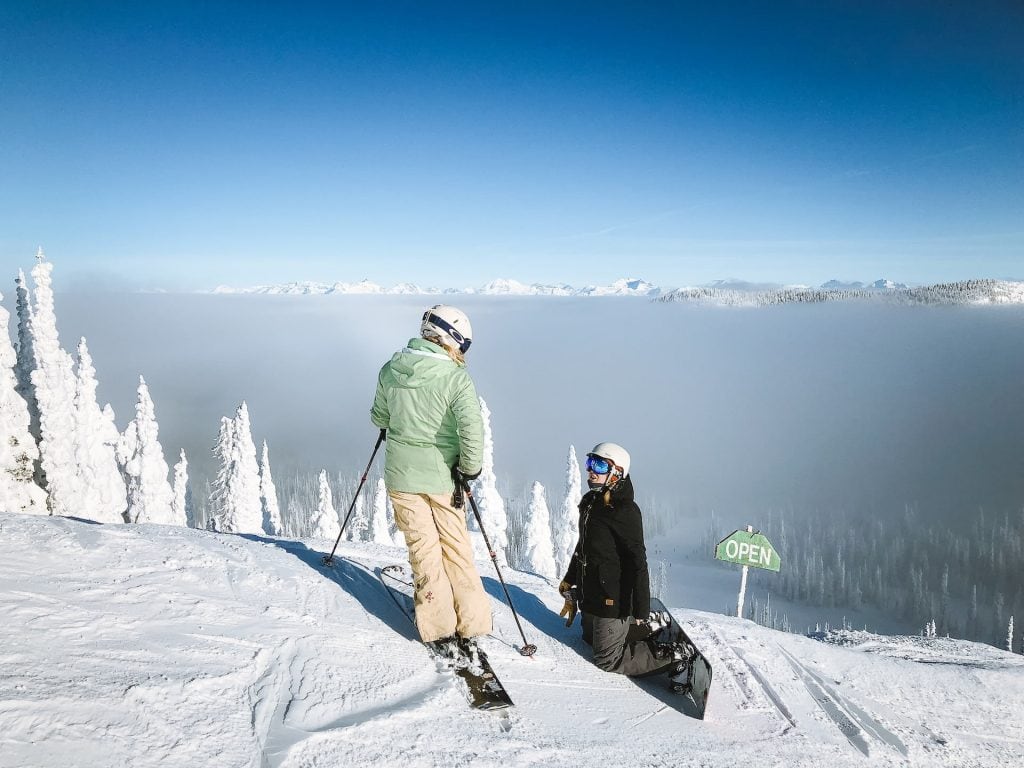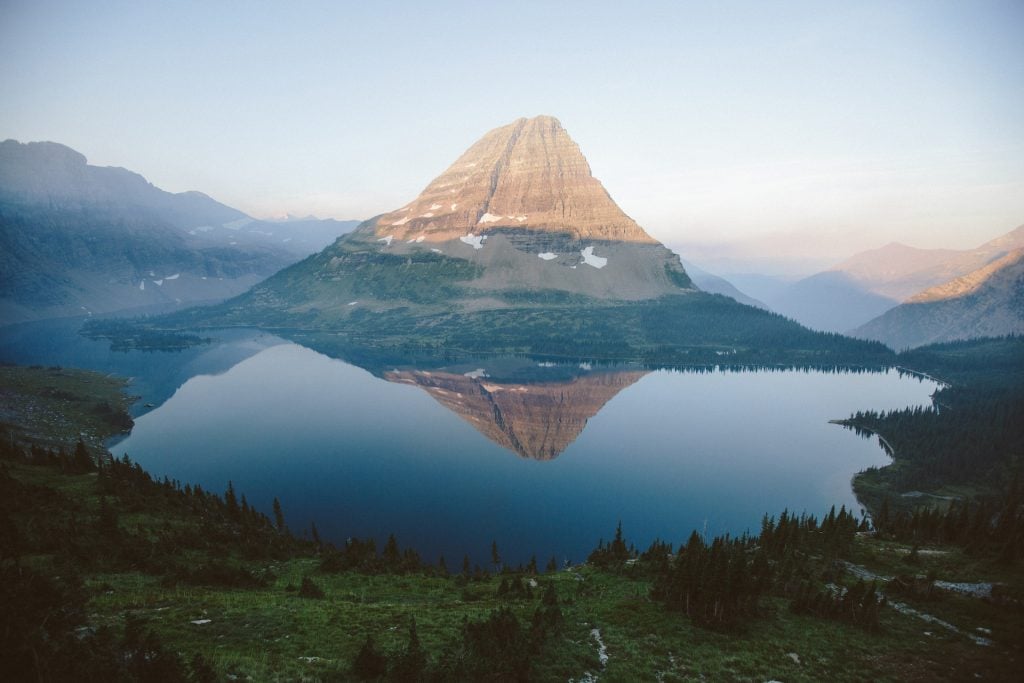Are you considering moving to Montana? With its natural beauty, low cost of living, and job opportunities, it’s no wonder many people are transitioning.
There are many reasons why so many people have chosen to call Montana home: from its quality education system and community involvement & support to more unique aspects like wildlife viewing areas and outdoor recreation activities – all these factors contribute to an amazing lifestyle in this beautiful state.
If you’re searching for a spot with ample potential for development, excitement, and leisure, read on as we delve into the top 10 reasons people are moving to Montana.
Reason #1: Wide Open Spaces and Natural Beauty

Montana has stunning natural beauty, with vast wilderness areas, towering mountains, rolling prairies, and dense forests. For many people, the opportunity to escape the hustle and bustle of city life and immerse themselves in the natural world is a major draw to Montana.
One of the most iconic features of Montana’s landscape is its mountains. The state is home to the Rocky Mountains, including the famous Glacier National Park, which offers some of the most breathtaking vistas in the country. Hiking, climbing, and skiing are just a few activities that draw people to Montana’s mountains and particularly to Glacier National Park.
Forests & Wildlife
In addition to the mountain ranges, Montana is also home to vast forests that cover much of the state. These forests provide a home to diverse wildlife, including grizzly bears, wolves, and elk. For nature lovers, exploring these forests and observing the animals that call them home is one of the reasons why it is worth moving to Montana.
Another feature of Montana’s landscape that attracts people to the state is its wide-open prairies. These vast expanses of grassland offer a sense of freedom and openness that is hard to find in many other parts of the country. For those who love to hike, bike, or simply explore, the prairies of Montana offer endless opportunities for adventure.
Reason #2: Low Population Density
Montana has a relatively low population density compared to other states, giving residents abundant space and a sense of privacy. The Treasure State is known for its wide-open spaces, vast wilderness areas, and breathtaking natural beauty.
Montana is the fourth-largest state in the country but ranks 44th in population, with just over a million residents. It also ranks 48th in population density. This means that Montana has a population density of just over seven people per square mile, significantly lower than the national average.
The low population density in Montana has many benefits for residents. For one, it means plenty of space to spread out and enjoy the outdoors without feeling crowded or cramped. This can be especially appealing for people looking for a quieter, more peaceful way of life.
The low population density in Montana also means that residents can enjoy a greater sense of privacy. With fewer people around, finding secluded spots to relax and unwind is easier.
Whether you’re looking for a remote camping spot, a quiet place to read a book, or a peaceful hike in the woods, Montana’s low population density makes finding the space you need to recharge easier. Ready for your moving to Montana?
Reason #3: Outdoor Recreation Opportunities
Montana is known as the “Last Best Place” for a reason. The state offers abundant outdoor activities that allow residents and visitors to explore its stunning natural beauty. From hiking and fishing to skiing and snowboarding, Montana has something to offer for outdoor enthusiasts of all ages and skill levels.
One of the most popular outdoor activities in Montana is hiking. With over three million acres of wilderness, state parks, and national forests, there are endless opportunities for hiking in Montana. From short nature trails to multi-day backpacking trips, hikers can explore the state’s diverse landscapes, including towering mountains, rushing rivers, and wide-open prairies.
Fishing and Hunting in Montana
Another popular outdoor activity in Montana is fishing. The state is home to over 170,000 miles of fishable streams and rivers, offering some of the best trout fishing in the country. Whether you prefer fly fishing or spin fishing, Montana’s rivers and lakes provide an abundance of opportunities to catch a variety of fish species.
Hunting is also a popular outdoor activity in Montana. The state is home to a diverse range of wildlife, including elk, deer, antelope, and bighorn sheep, making it a popular destination for hunters. Montana offers both archery and rifle hunting seasons, and many hunters hire experienced outfitters to guide them on their hunts.

Skiing in Montana
During the winter months, Montana’s ski resorts offer world-class skiing and snowboarding opportunities. Big Sky Resort, located in southwest Montana, is one of the largest ski resorts in the country, offering over 5,800 skiable acres and 4,350 feet of vertical drop. Other popular ski resorts in Montana include Whitefish Mountain Resort and Bridger Bowl Ski Area.
In addition to the winter sports activities, moving to Montana also offers opportunities for rock climbing, mountain biking, horseback riding, and more.
Reason #4: Educational Opportunities
Montana offers many educational opportunities, from public and private schools to colleges and universities. The state is committed to providing high-quality education for students of all ages, with a focus on preparing them for success in college, career, and life.
Montana’s public school system is made up of over 800 schools across 300 school districts serving over 147,000 students. The state’s schools have strong academic programs, with a focus on STEM education, literacy, and college readiness. Montana’s public schools also offer a range of extracurricular activities, including sports, music, and theater, allowing students to explore their interests and passions outside of the classroom.
Alternative Education
For families moving to Montana with alternative educational needs, Montana also has a number of private schools. These schools offer a range of educational approaches, including Montessori, Waldorf, and religious-based education. Private schools in Montana are known for their small class sizes and personalized attention, allowing students to receive individualized instruction and support.
Colleges & Universities

Montana is also home to a number of colleges and universities, offering a range of degree programs and educational opportunities. The top options include:
- The University of Montana, located in Missoula, is the state’s flagship institution and offers over 200 undergraduate and graduate programs.
- Montana State University, located in Bozeman, is another top-ranked institution with strong programs in agriculture, engineering, and technology.
In addition to these larger universities, Montana also has a number of smaller colleges and community colleges, like Rocky Mountain College. These institutions offer associate and bachelor’s degree programs, as well as vocational and technical training programs.
Reason #5: Great Food and Drink
Montana may not be the first place that comes to mind when you think of great food and drink, but the state has a vibrant and growing culinary scene. Montana’s cuisine is often inspired by the state’s natural resources, with a focus on locally grown and produced ingredients like beef, grain, and craft beer.
Montana is well-known for its high-quality beef, with many ranches and farms producing some of the best beef in the country. In addition to beef, Montana is also home to a variety of other locally raised meats, including bison, elk, and lamb.
Craft Beer in Montana
Montana’s agricultural heritage is also reflected in the state’s craft beer industry. Montana has more breweries per capita than any other state, with over 90 breweries and counting. Many of these breweries use locally grown barley and hops, creating unique and flavorful beers that reflect the state’s natural resources. Montana’s craft beer scene is famous for its innovation, with breweries using out-of-the-box ingredients.
In addition to beef and beer, Montana is also home to a variety of other local products, such as wheat, honey, and cheese. Many of these products can be found at local farmers’ markets and specialty food stores, allowing residents and visitors to experience the flavors of Montana’s land and culture.
Montana’s food and drink scene is not just limited to local products, however. The state’s cities and towns are also home to a range of international cuisine, from sushi and Thai food to Italian and Mexican. Many of these restaurants use locally sourced ingredients, creating a unique fusion of global and local flavors. Looking for great food? Moving to Montana can be a great option.
Reason #6: A Great Option for Retirees.
Retiring in Montana can be a wonderful choice for those looking for a peaceful, scenic location with plenty of opportunities for outdoor recreation. The state’s low cost of living, the affordable homes for sale in Montana, and favorable tax rates make it an appealing destination for retirees.
One of the biggest advantages of retiring in Montana is the state’s tax structure. Montana has no sales tax and a relatively low property tax rate, making it a cost-effective choice for retirees on a fixed income.

For those who love the great outdoors, Montana is a paradise. The state is home to two of the country’s most famous national parks, Glacier National Park and a portion of Yellowstone National Park, as well as numerous state parks and wilderness areas.
Retirees can enjoy hiking, fishing, hunting, skiing, and other outdoor activities year-round. Montana’s stunning natural beauty and wide-open spaces provide a peaceful, tranquil environment ideal for retirement.
Moving to Montana is also a great choice for retirees who value community and cultural activities. The state has a vibrant arts and cultural scene, with museums, galleries, theaters, and music venues. Many communities also have active senior centers and other organizations that offer social events and activities for retirees.
Reason #7: Friendly People
Montana is known for its friendly and welcoming culture, with residents often going out of their way to make visitors feel at home. This welcoming attitude is evident in the way Montanans interact with each other on a daily basis. Whether driving down the road or grabbing a cup of coffee at a local cafe, it’s not uncommon to receive a friendly wave or strike up a conversation with a stranger.
The friendliness of Montanans can be attributed to a number of factors. The state’s rural nature and tight-knit communities foster a sense of connectedness and mutual support. Montanans are often proud of their state and eager to share its beauty and traditions with others.
Montanans is a very friendly state with many locals happy to offer a helping hand or share a meal with visitors. This hospitality is especially evident in the state’s tourism industry, with locals eager to provide recommendations for the best hiking trails, fishing spots, or local restaurants.
Reason #8: Employment Opportunities
Montana is a state with a diverse economy and a variety of employment opportunities. Agriculture is one of Montana’s most important industries, and the state is famous for its cattle, wheat, and barley production.

Montana is also a leading producer of pulse crops such as lentils, chickpeas, and dry peas. These crops are in high demand both domestically and internationally, providing a steady source of employment for farmers, ranchers, and agricultural workers.
Energy, Tech, and Tourism
The energy industry is another major employer in Montana, with the state producing coal, oil, and natural gas. The state is also a leader in renewable energy, particularly wind and solar power. Montana’s abundant natural resources and supportive business environment make it an attractive destination for companies looking to invest in energy production and distribution.
The state’s national parks, such as Yellowstone and Glacier, are major draws for tourists from around the world. In addition to the national parks, Montana’s ski resorts, fishing & hunting opportunities, vibrant arts, and cultural scene also attract visitors and provide employment for those in the tourism industry.
Montana is also home to a growing technology sector, particularly in the cities of Missoula and Bozeman. These cities have become hubs for technology startups and companies, providing employment opportunities for software developers, engineers, and other tech workers moving to Montana.
Reason #9: Tax Benefits
Montana’s income tax system is one of the most progressive in the country, with tax rates ranging from 1% to 6.9%, depending on income. This means those with lower incomes pay a lower tax rate than those with higher incomes. The tax brackets are also adjusted for inflation each year, so taxpayers do not have to worry about their tax bracket staying the same despite inflation.
Another significant tax benefit of moving to Montana is the lack of a sales tax. While some local governments may impose local option sales taxes, there is no statewide sales tax. This means people moving to Montana can potentially save money on purchases compared to residents of other states that have sales taxes. It also makes Montana a popular destination for shopping and tourism, as visitors can take advantage of tax-free shopping.
Montana’s property tax rate is also relatively low compared to the national average. According to the Tax Foundation, Montana’s property tax rate is 0.85%, which is lower than the national average of 1.07%. This means that homeowners in Montana pay less in property taxes than homeowners in many other states. Additionally, Montana provides several property tax relief programs for seniors, disabled veterans, and low-income homeowners.
Reason #10: Cultural Diversity
Montana is known for its natural beauty, but it is also rich in cultural diversity. People from all over the world call Montana home, and this diversity is one of the many reasons why the state is an attractive destination for those looking to move.
From Native American cultures to immigrant communities, Montana’s cultural landscape is as varied and colorful as its physical landscape.
Montana has a long and fascinating history with its indigenous populations, including the Crow, Blackfeet, and Salish tribes. Native American culture is an integral part of Montana’s identity, and visitors can experience this firsthand through traditional powwows, museums, and cultural events. The Montana Historical Society Museum in Helena has a comprehensive exhibition dedicated to Montana’s Native American tribes and their history.
In addition to its indigenous communities, Montana is also home to a variety of immigrant communities. German, Norwegian, and Irish immigrants played a significant role in Montana’s development during the late 19th and early 20th centuries. Their contributions can still be seen in the state’s architecture, food, and traditions.
Today, Montana is also home to growing communities of Asian, African, and Latin American immigrants, adding to the state’s cultural richness.
Montana’s diverse cultural landscape is reflected in its food scene. Visitors can try traditional Native American dishes, such as bison burgers and fry bread, or enjoy Scandinavian treats like lefse and lutefisk.
The state’s breweries and distilleries also reflect the cultural diversity of the region, with beers and spirits made from traditional recipes handed down through generations.
In addition to its food and drink, Montana’s cultural diversity is also evident in its arts and music scene.
The state has a thriving arts community, with galleries and studios showcasing the work of local and international artists. Montana’s music scene is equally diverse, with everything from bluegrass and country to jazz and rock being celebrated throughout the state.
Conclusion
From the stunning natural beauty of the state to the friendly communities and affordable living, Montana offers a unique quality of life that is difficult to find elsewhere.
The state’s diverse economy, low crime rates, and excellent schools also make it an attractive destination for families and professionals alike.
Whether you are drawn to outdoor recreation opportunities or the vibrant arts and cultural scene, there’s something for everyone here. You can also sign up for alerts to receive notifications when new listings come on the market.
If you’re planning on moving to Montana, make some time to search for the right property there. Some of the best cities to call home in the state are:
You can also contact a local eXp real estate agent to get professional help in your real estate search.
Frequently Asked Questions: Moving to Montana
Here are some frequently asked questions about living in Montana.
Is it expensive to live in Montana?
Montana’s cost of living can be higher than the national average due to factors such as its rural nature and high demand for outdoor recreational activities. However, the state’s cost of living is still generally lower than other Western states.
Real estate in Montana can be higher value in some regions of Montana, such as in resort towns or near national parks, but the state also has affordable real estate options across many urban and suburban cities, as well as rural areas.
If moving to Montana is in your mind, and you’re especially careful with your finances you should also consider much more than just the housing cost. This state has no sales tax, which can help offset some of the higher costs of living. Ultimately, the cost of living in Montana can vary depending on the specific region within the state.
Is Montana a good state to move to?
Montana can be a good state to move to for those who prioritize outdoor recreation, natural beauty, and a slower pace of life. The state offers abundant outdoor recreational opportunities, including skiing, hiking, and fishing, as well as stunning national parks and forests.
Additionally, access to healthcare and cultural amenities can be limited in some regions. Whether moving to Montana is a good idea depends on individual preferences and priorities.
What do I need to know about Montana before moving there?
Before moving to Montana, it is important to consider factors such as the state’s climate, cost of living, and employment opportunities. Montana can have a harsh winter climate, with cold temperatures and heavy snowfall in some regions.
The state’s cost of living can be higher than average due to its rural nature and high demand for outdoor recreational activities. Employment opportunities can also be limited in some regions.
Additionally, it is important to research the specific region or city in Montana that you are considering, as the state’s economy and culture can vary significantly between regions.
Is moving to Montana worth it?
Whether moving to Montana is worth it or not depends on individual preferences and priorities. Montana offers stunning natural beauty, a low population density, and abundant outdoor recreational opportunities.
However, the state can have a harsh climate and a limited job market, particularly in rural areas.
Additionally, access to healthcare and cultural amenities can be limited in some regions. Ultimately, those who prioritize outdoor recreation and a slower pace of life may find Montana an ideal destination, while others may prefer to look elsewhere.
What are the pros and cons of living in Montana?
Moving to Montana offers several pros and cons. On the positive side, the state boasts beautiful scenery, a low population density, and abundant outdoor recreation opportunities. Montana also has no sales tax and a relatively low cost of living compared to other Western states.
On the negative side, the state can have harsh winters and a limited job market, particularly in rural areas. Additionally, Montana has a relatively high rate of property crime and limited access to healthcare in some areas.
What is the most common job in Montana?
The most common job in Montana is general and operations manager, which makes up around 4% of the state’s total employment. Other jobs in Montana include retail salesperson, truck driver, registered nurse, and office clerk.
Montana’s economy is diverse, with significant contributions from industries such as agriculture, tourism, healthcare, and energy. The state is also home to several national parks and forests, which provide employment opportunities in areas such as outdoor recreation and hospitality.
Is it cheaper to live in Texas or Montana?
In general, it is cheaper to live in Texas than in Montana. Texas has a lower cost of living index, with lower prices for housing, transportation, and groceries. Montana’s cost of living is higher due to factors such as its rural nature and high demand for outdoor recreational activities.
However, the cost of living can vary depending on the specific city or region within each state. For example, some areas in Montana may be more affordable than some areas in Texas.
What is the best city to live in Montana?
Determining the “best” city to live in in Montana depends on personal preferences and priorities. Some popular cities in Montana include Bozeman, Missoula, and Billings. Bozeman is great for its outdoor recreation opportunities and proximity to Yellowstone National Park, while Missoula is a cultural hub with a vibrant downtown and access to outdoor recreation.
Billings is the largest city in Montana and offers a range of amenities and employment opportunities. Ultimately, the best city to live in in Montana depends on factors such as cost of living, job opportunities, outdoor recreation, and cultural offerings.
What are winters in Montana like?
Winters in Montana are generally cold and snowy, with temperatures dropping well below freezing. Snowfall is common, particularly in mountainous regions, and can accumulate to several feet in some areas.
The state has a diverse climate, with some areas experiencing milder winters while others can see temperatures as low as -50°F (-45°C) during the coldest months. Winter activities such as skiing, snowmobiling, and ice fishing are popular in Montana, making it a destination for outdoor enthusiasts during the winter season.
How cold does Montana get?
Montana is known for its cold winters, with temperatures dropping well below freezing. The state has a diverse climate, with some areas experiencing milder winters while others can see temperatures as low as -50°F (-45°C) during the coldest months.
In general, temperatures in Montana during winter range from around 0°F (-18°C) to 20°F (-7°C) in the west and southwest and from -10°F (-23°C) to 10°F (-12°C) in the northeast. Additionally, the state can experience significant snowfall, particularly in mountainous regions.





